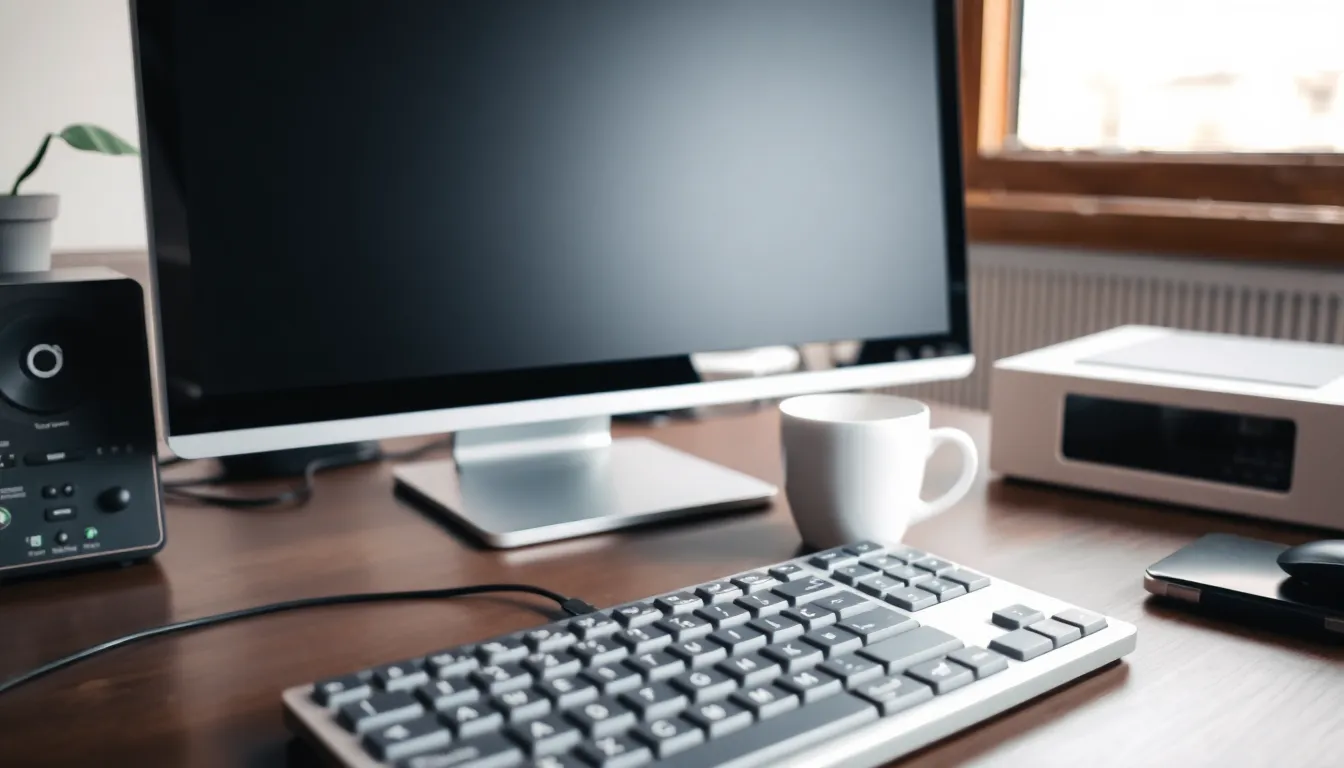In a world where distractions lurk around every corner, keeping your computer secure is more important than ever. Whether it’s a nosy coworker or a mischievous pet, locking your screen with a quick keyboard shortcut can save you from some awkward situations. Imagine returning to your desk only to find your screen filled with cat memes or, worse, your boss’s email open for all to see.
Learning how to lock your computer with just a few keystrokes is not only a smart move; it’s a superpower. With a simple combination, you can protect your work and maintain your sanity. So, let’s dive into the keyboard shortcuts that’ll turn you into a locking legend, ensuring your digital space stays as private as your snack stash.
Table of Contents
ToggleUnderstanding Keyboard Shortcuts
Keyboard shortcuts streamline the process of locking a computer, enhancing security with minimal effort. Utilizing these shortcuts ensures protection against unauthorized access.
Importance of Locking Your Computer
Locking a computer serves as a fundamental security measure, preventing exposure to sensitive information. Unauthorized access can lead to significant issues, like compromised data or exposure to inappropriate content. Users face potential risks when they leave their screens unlocked, as distractions can arrive unexpectedly. Maintaining privacy becomes essential, especially in shared environments. Implementing keyboard shortcuts for locking screens holds significance in safeguarding personal and professional data.
Overview of Keyboard Shortcuts
Keyboard shortcuts provide a quick way to perform actions without navigating through menus. They save time and enhance productivity, which is crucial in today’s fast-paced digital environment. For example, Windows users can press “Windows + L” to lock their screens instantly. Mac users benefit from “Control + Command + Q” for similar results. Memorizing these shortcuts empowers users to protect their devices efficiently. Mastery of such keyboard shortcuts fosters a secure and focused workspace.
How to Lock Computer with Keyboard on Windows


Locking a computer with the keyboard ensures quick security measures. Users can leverage several effective shortcuts.
Using the Windows Key
Pressing the Windows key combined with the letter L locks the computer instantly. This combination offers immediate security, acting as a swift barrier against unauthorized access. Users find it easy to remember and execute. After pressing these keys, the screen turns dark, requiring a password to regain access. This shortcut stands as the most widely recognized among Windows users, allowing for seamless protection of sensitive information.
Using Ctrl + Alt + Delete
Pressing Ctrl, Alt, and Delete opens a security options menu on Windows. From this menu, selecting “Lock” provides a reliable way to secure the computer. This method gives users additional options such as changing passwords or logging off. It’s especially useful when users want to ensure all security features are at their fingertips. By employing this combination, users enhance their control over computer access, ensuring a safe environment in shared spaces.
How to Lock Computer with Keyboard on Mac
Locking a Mac computer can be accomplished easily using specific keyboard shortcuts, enhancing security and privacy in shared environments.
Using Command + Control + Q
Pressing Command + Control + Q locks the Mac instantly. This shortcut is intuitive, requiring only two keys. After activation, the screen displays a lock icon and prompts for a password to regain access. Users quickly learn this method, making it a go-to option for securing their machines. This shortcut functions seamlessly across recent macOS versions, ensuring consistency in usage.
Using Hot Corners
Hot Corners provide an alternative method for locking a Mac. Users can configure each corner of the screen to execute specific actions upon mouse movement. After setting a corner to “Lock Screen,” just moving the cursor to that corner locks the computer. This method offers a quick and fluid way to secure the screen without relying solely on keyboard shortcuts. Additionally, accessing System Preferences allows users to customize their Hot Corners, enhancing their locking experience based on individual preferences.
Troubleshooting Common Issues
Keyboard shortcuts play a crucial role in locking computers quickly. Sometimes, users encounter issues where the shortcut does not function as expected.
Shortcut Not Working
When encountering a shortcut that doesn’t work, several factors might be at play. First, check if the keyboard is functioning properly. A malfunctioning keyboard might prevent shortcuts from being recognized. Ensure the operating system is updated, as software glitches can affect functionality. Additionally, some applications may override keyboard shortcuts, causing them to fail. Restarting the computer can sometimes resolve temporary glitches. If the shortcut remains unresponsive, users might consider checking system settings related to keyboard preferences, where accessibility features could impact performance.
Customizing Keyboard Shortcuts
Customizing keyboard shortcuts can enhance user experience. Both Windows and Mac allow adjustments to existing shortcuts, providing flexibility. On Windows, navigate to “Settings” and select “Ease of Access.” Here, users can modify shortcuts based on their preferences. Mac users can access “System Preferences” and choose “Keyboard,” where they can customize shortcuts easily. Specific shortcuts can also be created for locking the screen. Users can tailor shortcuts to their workflow, making computer security more streamlined and efficient. Adjusting shortcuts promotes a personalized security approach and improves ease of use.










